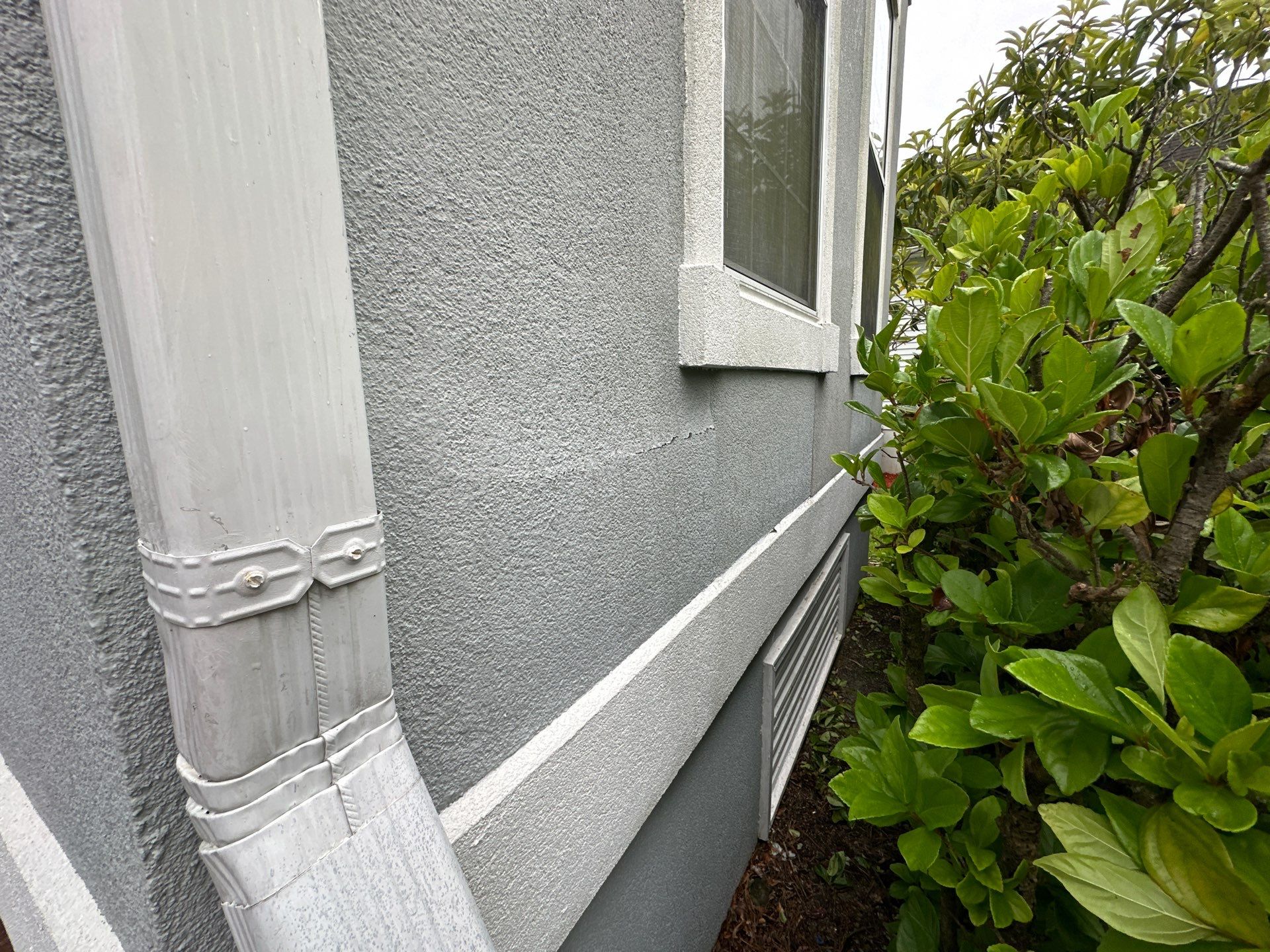Stucco is a cement type material used for centuries on homes and buildings for its aesthetic appearance and durability in varying weather climates. Stucco is known to adorn the facades of historic homes as well as modern constructions, because it provides both beauty and functionality. Like any surface, however, it is not immune to wear and damage. When cracks, chips, or other issues begin to emerge, it’s essential to address them promptly through proper stucco repair.
Many homeowners might underestimate the importance of maintaining their stucco exterior, leading to larger and costlier issues down the road. Knowing when it’s time to repair your stucco can save you time, money, and potential structural damage. But how do you know when to call Old Charleston Painting Company for stucco repair? In this blog, we’ll discuss the warning signs that signal it’s time to take action.
Don't wait until small cracks become major problems. Contact our expert team for a free stucco inspection today!
Warning Signs It's Time to Repair or Replace Your Stucco
Cracks are typically caused by several factors:
1. Cracking Stucco
Cracks in stucco are one of the most common signs that repairs are needed. While hairline cracks may seem minor, they can gradually widen over time, allowing water to penetrate the underlying layers. This moisture infiltration can lead to severe damage, not only to the stucco but also to the structure of the building.



Settling Foundation: As a home settles over time, the exterior stucco may crack, especially around windows, doors, and corners.
Improper Installation: Poorly applied stucco may not bond well to the surface or could lack proper expansion joints, leading to stress cracks.
Temperature Fluctuations: In areas where temperatures drastically fluctuate, expansion and contraction can cause the stucco to crack.
If you notice even small cracks, it's crucial to have them assessed by a professional to determine if they are surface-level or indicate a deeper issue.
Noticed cracks forming on your stucco? Schedule a free assessment with our professionals to prevent further damage.
2. Stains and Discoloration
Discoloration on stucco surfaces is not merely a cosmetic concern. Stains, especially brown or black streaks, could signal water damage or mold growth. Stucco is designed to repel water, but once cracks or damage occur, water can penetrate and create unsightly stains.
If you observe patches of stucco that are darker than the surrounding areas, it’s important to determine whether this is caused by dirt or algae buildup or something more severe, such as water seeping into the substrate. Persistent moisture problems can lead to long-term structural damage and even health concerns if mold develops inside the walls. Consulting the experts at Old Charleston Painting Company to diagnose the cause of discoloration is essential for preventing larger issues.
3. Bulging or Bubbling Stucco
If you notice areas where the stucco appears to be bulging or bubbling, this is a clear sign that water has gotten behind the stucco layer. Bulging often indicates that the stucco has become detached from the wall due to moisture, improper installation, or foundational shifts.
When moisture becomes trapped, it can create pressure that pushes the stucco outward, creating visible bubbles or bulges. This is particularly concerning because trapped moisture can deteriorate the integrity of the wall structure over time. These issues often require immediate professional intervention, as replacing damaged sections of stucco might be necessary.
4. Chipping or Peeling Stucco
Chipping or peeling stucco is one of the more common signs you need stucco repair. Both cases may appear small but are often the gateway to bigger issues down the line because of the compromise to the surface integrity. Peeling or chipping stucco could expose the layers underneath, making your home more vulnerable to water damage and pest infestations. These issues can result from age, poor application, or ongoing exposure to harsh elements like heavy rain or extreme temperatures.
Addressing chipping or peeling stucco early even when the problems seem small will not only restore the aesthetic appeal of your property but also prevent deeper structural issues from developing.
5. Moisture Intrusion and Efflorescence
Efflorescence is the appearance of a white, powdery substance on the surface of stucco. It is the result of water seeping into the stucco and dissolving salts within the material. As the water evaporates, it leaves behind these salt deposits, which can often be brushed off but will continue to appear as long as moisture is present.
Efflorescence is a clear indicator of water infiltration, which could be due to cracks, leaks, or improper sealing of the stucco. If left untreated, this moisture can deteriorate the stucco and lead to more severe problems like rot, mold growth, and damage to the underlying structure.
6. Soft Spots or Spongy Stucco
Stucco should feel solid when you press against it. However, if you notice areas that feel soft, spongy, or hollow, this could indicate water damage beneath the surface. Soft spots suggest that the stucco has lost its bond with the substrate, likely due to moisture or structural issues.
This issue is particularly concerning because it is often a sign that water has penetrated the stucco for an extended period, causing the wood framing or insulation behind the stucco to weaken or rot.
Noticed cracks forming on your stucco? Schedule a free assessment with our professionals to prevent further damage.
7. Drafts or Water Leaks Inside Your Home
Stucco is designed to act as a protective barrier between your home and the elements. If you start noticing drafts, water stains, or leaks inside your home, especially around windows, doors, or baseboards, this could be a sign that your stucco is compromised.
This issue is particularly concerning because it is often a sign that water has penetrated the stucco for an extended period, causing the wood framing or insulation behind the stucco to weaken or rot.
8. Outdated or Poor-Quality Stucco
If your stucco is outdated or was installed by an inexperienced contractor, it may be more susceptible to damage. Older homes with stucco that has not been properly maintained may experience cracking, peeling, or water infiltration due to the natural aging of the materials. In some cases, poor-quality stucco mixes or improper application techniques can result in premature deterioration.
If your stucco is several decades old, or if you know it was installed without proper techniques or materials, it may be time to consult a stucco repair professional like OCPC to assess whether it needs repair or replacement.
9. Visible Holes or Punctures
Holes or punctures in stucco can occur due to physical damage, such as impacts from objects or weather-related events like hail. These openings can expose the underlying layers to water and pests, which can lead to further deterioration of the wall’s integrity. Even small holes can cause significant damage if left untreated, so it’s important to address them when noticed.

Maintaining the integrity of your stucco is essential for both the aesthetics and structural safety of your home. Ignoring the early warning signs of stucco damage—such as cracks, discoloration, bulging, or moisture problems—can lead to expensive repairs down the line. When it comes to repairing stucco, timely intervention is key to preventing more serious damage. If you notice any of the issues mentioned above, it’s best to consult the professional stucco repair experts at Old Charleston Painting Company who can assess the extent of the damage and recommend the appropriate solution. Quality stucco repair can restore your home’s appearance and safeguard it from future problems.
Don't let stucco damage go unchecked. Call us now for expert repairs and a guaranteed solution to restore your home.
